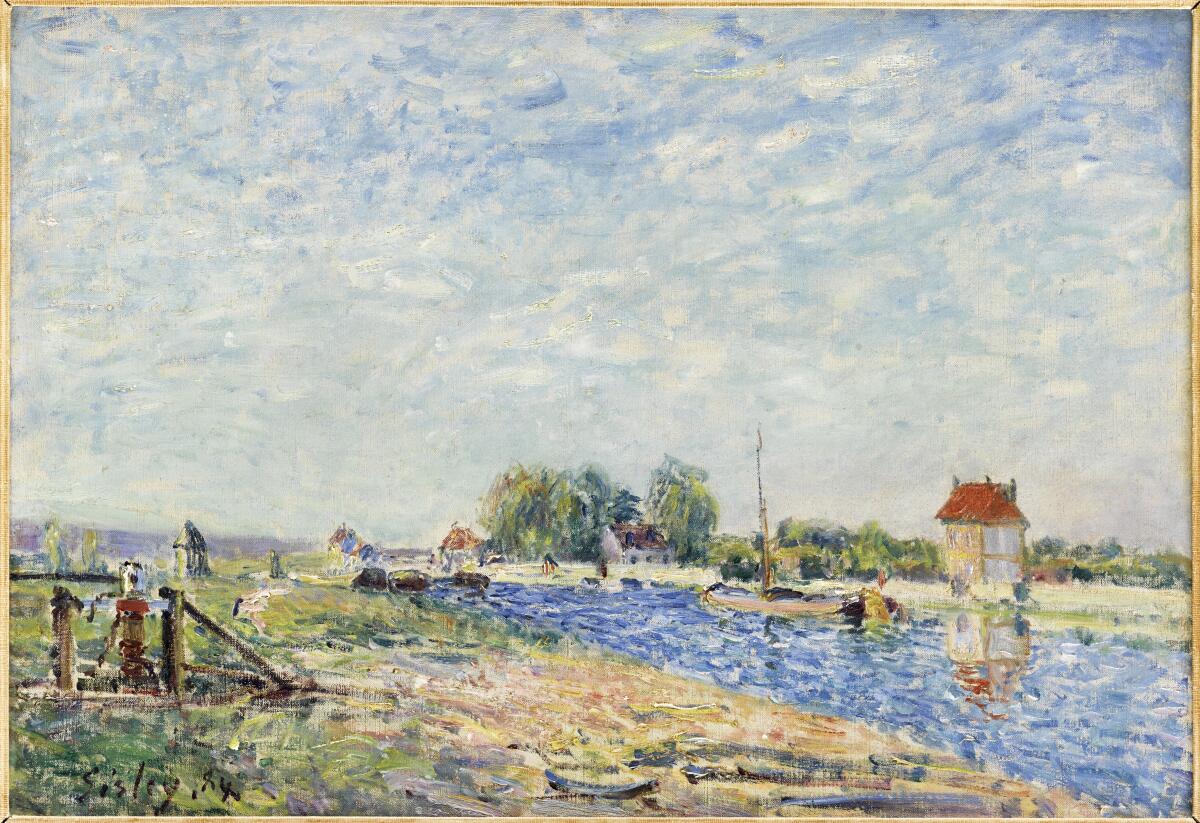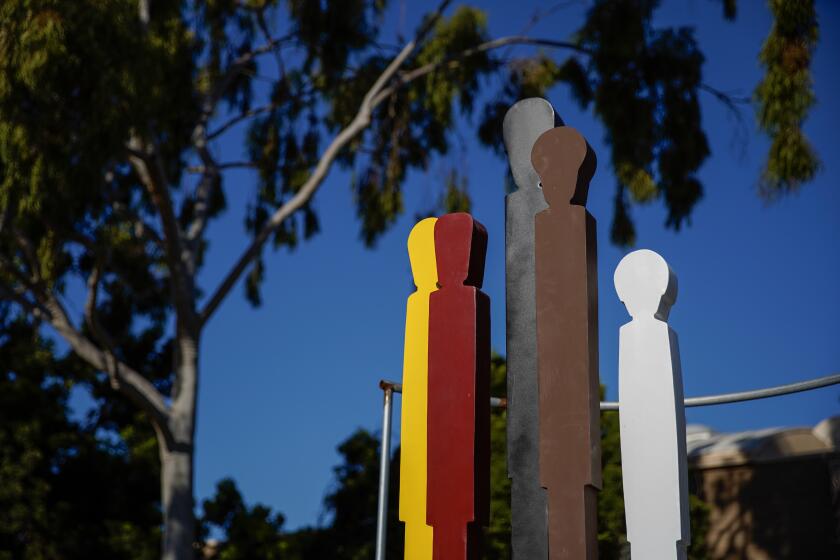SDMA’s ‘Monet to Matisse’ an expansive look at the Impressionists

More than 60 works appear in SDMA’s new exhibition ‘Monet to Matisse: Impressionist Masterpieces from the Bemberg Foundation’ that opens March 19
The spring of 1874 in Paris shook up the art world. The San Diego Museum of Art’s Curator of European Art, Michael Brown, explains:
“The first so-called Impressionist Exhibition was held as a kind of parallel or satellite opposite the official Paris Salon,” he recounted. “It left the academic training behind and followed the idea of the effects of light, the effects of color and a very spontaneous looking application of oil paint on canvas. Some were outright offended at what these artists were doing.”
Among those artists were Camille Pissarro, Alfred Sisley, Berthe Morisot and Claude Monet, whose ”Impression, Sunrise,” a painting of the port of La Havre, his hometown, gave a name to the Impressionist Movement.
Works by these transformative artists as well as paintings by Post-Impressionists Paul Cezanne, Pablo Picasso, Pierre Bonnard and Henri Matisse comprise the more than 60 in SDMA’s new exhibition “Monet to Matisse: Impressionist Masterpieces from the Bemberg Foundation” that opens Saturday.
This collection comes to San Diego from Toulouse, France, where its permanent home there in the Hotel d’Assezat is under renovation. “Monet to Matisse” is the second Bemberg exhibition negotiated by SDMA Executive Director Roxana Velasquez to make the trip from Europe. Last year, the Balboa Park-based museum presented “Cranach to Canaletto: Masterpieces from the Bemberg Foundation.”
Curator Brown calls “Monet to Matisse,” featuring works from the 1870s to the 1930s, “equally if not more expansive than the Old Masters (‘Cranach to Canaletto’). This is a collection that hasn’t traveled before and probably won’t again for a very long time.”
Collector Georges Bemberg, who passed away in 2011, possessed “an aesthetic of beauty,” Brown said. “He had a great appreciation for the Impressionists’ approach to color and light.”
This was at the heart of the Impressionists’ ethos. “This incredible and very courageous movement began with the idea of painting out of doors,” Brown said. But the history that preceded them was not lost on the Impressionists.
“They all understood art history very well,” explained Brown. “(Edouard) Manet was a pre-Impressionist, but he had a big impact on the rest of the Impressionist painters. He and Monet and many of the other artists had an acute appreciation for Old Master paintings, especially those artists who worked with a more open brushwork, like (Francisco) Goya and (Diego) Velazquez. That freedom of touch was really what drove the movement.”

The Post-Impressionist period took hold as early as the 1880s and over the course of half a century manifested itself in various artistic movements, some of them short-lived. “These also featured experimenting with color and light in different ways,” Brown said, “and it was all part of this charge toward modernism.”
“The offshoot movements paved the way for artists like Picasso and Matisse, who are both represented in the (SDMA) show and who are not necessarily thought of as Impressionists, but they were certainly influenced by and interested in the movement.”
Brown believes the timing of this “Monet to Matisse” exhibition at SDMA is ideal.
“As we return to museums we can appreciate the great beauty but also the great courage of these artists who were working against the grain,” he said. “They were also practicing an art form that is immediately accessible to our visitors today.”

Among the artworks on view in this exhibition
• A painting of Monet’s from 1883 of the beach at Etretat in Normandy. “This was one of the places he and his wife frequented while they were still alive,” Brown said. “It was the year that he moved to Giverny, where he began building the famous gardens there.”
• A portrait by Pissarro of his son Felix, which exemplified the Impressionists’ proclivity for domestic scene paintings. “They began to paint their families as main subjects of their works of art,” Brown said.
• In the same vein, another painting, by Edgar Degas, depicted a woman combing her hair. “These day-to-day activities and family members that wouldn’t be acceptable in an academic work are things the Impressionists were interested in,” Brown said, “and it’s revolutionary.”
• Morisot, though the only woman in the first Impressionist Exhibition in 1874, was one of the most successful of its artists. “She didn’t conform to what the other Impressionists were doing,” Brown said, “and she didn’t care much about what the critics were saying. That freedom really let her experiment with her brushwork and her approach. Her oil paintings often had the feel of a pastel. She uses a very dry brush to paint highlights, dragging the brush across the top layer of the paint surface.” Included in the exhibition is a painting of her daughter Julie, who herself became a painter. (Morisot was married to Manet’s brother, Eugene, also a painter.)
• Paul Signac’s “Bell Tower of St. Tropez,” which Brown calls “one of the stars of the show. Visitors will see it as soon as they enter the first gallery of the exhibition.”
• Matisse’s depiction of the South of France — darker than most would imagine of this popular resort destination. Brown calls it “almost a study of weather and cloud formations. It’s a slightly different side of Matisse.”
Also in the exhibition: works by Pierre-Auguste Renoir, Sisley, Bonnard, and works on paper by Picasso, Morisot, Cezanne, Amedeo Modigliani and Henri de Toulouse-Lautrec.
‘Monet to Matisse: Impressionist Masterpieces from the Bemberg Foundation’
When: March 19-Aug. 7
Where: San Diego Museum of Art, 1450 El Prado, Balboa Park
Tickets: $20-25 ($5 for youths 7-17)
Online: (619) 232-7931
Online: sdmart.org
Coddon is a freelance writer.
Get U-T Arts & Culture on Thursdays
A San Diego insider’s look at what talented artists are bringing to the stage, screen, galleries and more.
You may occasionally receive promotional content from the San Diego Union-Tribune.





